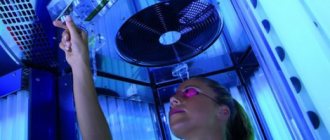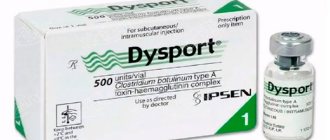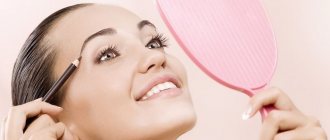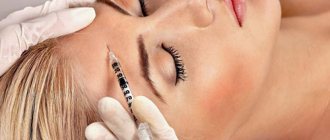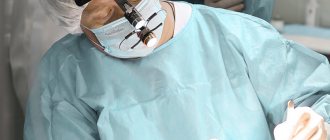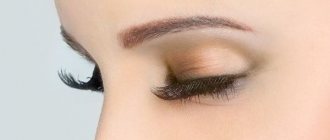The dangers of early exercise
Premature intense loads on the upper body after mammoplasty threaten the formation of a rough scar. This is due to the fact that an unformed scar under external pressure on the tissue can stretch.
Excessive activity in the first weeks after surgery can cause the implant to dislodge. As a result, new surgery will be required.
Lifting weights and performing physical exercises aimed at the shoulder girdle is prohibited for two months, as this risks the implant falling out of the pocket, which will lead to breast asymmetry and repeated surgery.
Premature physical activity can lead to complications such as seroma.
It is a yellowish, slightly viscous liquid that accumulates between the mammary gland and the implant.
In this case, timely administration of antibiotics is necessary. In some cases, it may be necessary to remove the implant.
Why do you exclude physical activity?
Sports after mammoplasty threaten the opening of bleeding.
This is one of the main reasons why heavy physical activity is avoided in the first months.
Excessive bleeding leads to the accumulation of a blood clot in the cavity of the pocket. Large hematomas form, which can serve as the beginning of a suppurative process.
Performing exercises in the early stages can also lead to seams coming apart.
After the sutures are healed, the nerve endings begin to gradually wake up, and the muscles become toned, physical exercise is allowed.
When can you exercise after mammoplasty?
The rehabilitation period after mammoplasty ranges from three to six months.
At this time it is not permitted:
- performing heavy physical activity;
- bodybuilding training;
- running, dancing;
- strength exercises (push-ups, barbell lifts).
You can return to serious activities only six months after the operation.
After three months, the doctor may allow athletics and running. It is very important not to overload the shoulder girdle with active exercises until the three-month period.
You can start exercising in the gym only after consulting with the plastic surgeon who performed the operation, since the timing of returning to physical activity is purely individual and depends on physiology, as well as the speed of the recovery process after surgery.
The main factors influencing the duration of the rehabilitation process include:
- implant size and shape;
- breast density;
- surgical technique and method of implant placement.
With large implant sizes, the time to return to sports may increase significantly.
The method of placement of the implant also determines which exercises can and should be done at first, and which should be excluded.
For example, the location of the implant under the muscle requires that full physical exertion on the shoulder girdle be avoided for up to six weeks.
When will it be possible to return to classes?
A ban on active sports immediately after surgery does not mean that you need to exclude any physical activity from your life. Mammoplasty is a serious shock for a woman’s body and it is necessary to return to normal life gradually. After three weeks after the operation, with the permission of the attending physician, you can gradually begin to do light exercises that do not affect the upper body; a small load will increase blood circulation, and therefore the healing process. By gradually increasing the load, after about six months you can return to more intense exercise. An earlier independent return to active movements can provoke the implant to fall out of the pocket, the appearance of a rough scar in a visible place and other problems.
Physical recovery of the body occurs after three months, during which time the scars heal and swelling subsides. But the final period is influenced by the individual characteristics of the body, which depend on the physical condition of the patient before surgery, the time of scarring of the sutures, the method of installing the implant and the location of access to the gland. Mammoplasty is completely compatible with fitness in the future and many famous people are proof of this. Following the surgeon’s recommendations and a reasonable approach to physical activity will help you overcome all the difficulties of the postoperative period and return to sports in excellent shape.
2018-08-17
Author: Karina Fomina
Procedure for returning to sports
- For the first three days, the patient needs complete rest and bed rest.
- After this period, you can get up and take short walks.
- In the first two weeks, only walking is allowed. Then you can perform exercises not related to the load on the shoulder girdle.
- Physical exercises should begin with small loads, which are gradually increased.
- After three or four weeks, the patient is allowed to do some light exercise. From this point on, you can gradually increase the duration of classes.
- After two months, you are allowed to engage in many physical activities. During this period, jogging and aerobics are included, but only after consultation with a doctor.
When placing implants under the muscle, it is advisable to wait up to 1.5 months before performing exercises.
Failure to comply with this rule may lead to the implant falling out before it has time to fix itself.
Exercising after surgery
In principle, doctors are not against the movement as such. But there is a very fine line that is easy to cross. In the first 2-3 days after surgery, you should not exercise at all. The body needs to recover a little and gain strength. After a few days, you can take short walks in the fresh air, trying to breathe evenly and calmly.
You can go to the gym or return to training only with the permission of your dentist. Usually, if no complications are observed, and the implant adapts well to the artificial bone, then you can gradually load the body after removing the sutures. This often happens 7-10 days after the procedure. But if patients experience any negative consequences, sports should be postponed for the entire rehabilitation period for the following reasons:
- Sudden pressure surges. During exercise, a person's blood pressure begins to rise. For a healthy body, this is an advantage rather than a disadvantage. But, in our case, an extremely opposite effect is observed. Blood begins to move faster through the vessels and because of this, their walls contract intensively. If enough time has not passed after the sinus lift, and the gums have not had time to heal, then the capillaries may burst and severe bleeding will begin. As a result, the implant may move or even fall out.
- Dehydration. During the rehabilitation process, it is extremely important that the body receives enough water. Physical activity involves greater fluid loss. And if we add to this the fact that the healing of muscle microtraumas after exercise also requires water, then there is nothing left for the restoration of postoperative wounds. As a result, wounds heal worse, inflammatory processes may begin and implant rejection may occur.
- Lack of nutrients . The situation is similar to the previous one. Regeneration of muscle tissue requires a huge amount of nutrients obtained from food, so to restore normal function of the oral cavity, useful microelements may not be enough. Because of this, overall immunity is reduced, and the body is more susceptible to developing infections. Active inflammatory processes in postoperative areas are extremely dangerous, as they can lead to purulent processes, rejection of bone material and tissue necrosis.
- Dry mouth. During active sports, normal breathing is constantly disrupted. A person begins to breathe quickly through the mouth, which leads to excessive dryness inside the oral cavity. The salivary glands cease to cope with their task and pathogenic microorganisms begin to actively multiply on the postoperative surface. This can lead to a serious increase in temperature, suppuration, poor wound healing and rejection of the artificial material.
- Injuries . Oddly enough, the chances of getting injured in the gym are quite high. No one is immune from blows to the postoperative area. Even minimal force can dislodge the installed implant, not to mention the fact that it can get into the maxillary sinus or fall out.
What can you do after surgery?
After the operation, a rehabilitation period begins for women.
The process of engraftment of the implant, its strong fixation to the tissue and the formation of a new breast during augmentation mammoplasty takes six weeks.
In the first three weeks, physical activity on the shoulder girdle is completely avoided so as not to interfere with the fixation of the implant.
Only short walks are possible.
Lifting even minor weights is strictly prohibited.
In the second three weeks, a woman can raise her arms up. The development of the shoulder girdle is performed with the “cheerful man” exercise.
Using two fingers, the hand moves slowly up the back. Thanks to this gymnastics, smooth and safe development of the shoulder girdle is achieved.
After four weeks, you are allowed to swim short distances. You can gradually begin training with dumbbells weighing no more than 2 kg.
After three months it is allowed:
- do stretching;
- pump up the press;
- raise your arms above your shoulders.
Push-ups, chest presses and pectoral stretches can be performed after six months, after consultation with your doctor.
You can engage in complex sports such as kickboxing, tennis or mountaineering only after 6-12 months.
This is influenced by factors such as the physiological characteristics of the patient and the size of the implants.
The load on the pectoral muscles should be introduced gradually. The first exercises with dumbbells are best done from a supine position. You should do push-ups from your knees at first.
Performing moderate exercise after breast surgery is a prerequisite.
Sports are especially important after mammoplasty under the muscle: exercise with a load on the shoulder girdle will help to avoid severe scarring, which limits mobility.
All types of exercise must be performed in compression garments for up to six weeks, and then in a sports bra.
What not to do after mammoplasty
We have already written in more detail about rehabilitation after plastic surgery for breast correction by day and month in this article. Now let's look at the restrictions after breast augmentation surgery, lifting or reduction mammoplasty.
Lifting arms and heavy objects
Immediately after mammoplasty, you should not raise your arms up. It will be difficult to do this due to pain, but if the patient, on the recommendation of a plastic surgeon, takes painkillers, then it is easy to forget about this important rule. If you raise your arms above the shoulder girdle, you can not only overstrain or stretch the pectoral muscles and healing tissue, but also accidentally displace the position of the implant. The same applies to lifting weights weighing more than 3-5 kg. For the first 5-7 days after breast replacement, you should not strain your pectoral muscles. You should avoid sudden movements, and also do not carry heavy bags on your own or open doors.
Work and drive a car
It is recommended to take a vacation during the operation and 1-2 weeks after it to recover in a relaxed environment. You may need to take painkillers. Driving is also not recommended due to the strain on the pectoral muscles, which increases the risk of implant displacement. After mammoplasty, you should not squeeze your breasts with a seat belt so as not to deform them. Therefore, in order to avoid emergency situations, you should refrain from driving a car after mammoplasty for some time.
Sleep on your side and stomach
For 2-3 weeks after breast correction, you need to sleep on your back. Why can’t you sleep on your stomach and side after mammoplasty? Firstly, the position of the implant is not yet fixed in the capsule - it can move. Secondly, the pressure of implants on the sutures causes discomfort and can negatively affect the quality of the postoperative scar. If the prostheses were installed under the pectoral muscles, then lying on your side can lead to overstrain. You should not forget about this not only immediately before bed, but also, for example, while watching TV.
Do sports and sex
As we have already noted, after mammoplasty you should not over-strain the pectoral muscles and disturb the healing tissue. Since the types of physical activity vary, and the course of recovery is individual, the question is “when can you go to the gym after mammoplasty?” should be discussed directly with your doctor. Premature vigorous training can lead to implant displacement and internal bleeding. When blood accumulates in the implant capsule, hematomas and seromas form, and the healing process slows down.
After mammoplasty, you cannot have sex for about 1 month. This is not so much due to physical activity as to the fact that under the influence of strong emotions the risk of accidental damage increases, which can undesirably affect the aesthetic result. In addition, during sex, the hormonal levels in a woman’s body change, and additional blood flows to the breasts, which can increase swelling.
Visit the bathhouse and sauna
Exposure to high temperatures on healing tissue after mammoplasty is unacceptable, as this can negatively affect the quality of the sutures and the process of scar formation. If rehabilitation is generally favorable, then a full visit to the bathhouse is possible after 6 months. A plastic surgeon who sees the patient after surgery will be able to answer the question about the timing of rehabilitation more accurately. Theoretically, a short-term visit to the hammam is possible as early as 1 month after the operation.
Sunbathing on the beach and in the solarium
After mammoplasty, you need to be wary of intense ultraviolet radiation. Exposure of seams to artificial or direct sunlight is unacceptable. Premature sunbathing can cause scars to become more visible. After breast correction, you should abstain from sunbathing in a solarium or on the beach for an average of 6-12 months.
Swim in the bathtub, shower, sea or pool
You can take a shower no earlier than 5-7 days after breast augmentation surgery, reduction mammoplasty or lift. Until then, wet wipes should be used for personal hygiene. Before swimming, it is necessary to close the seams with special plasters to avoid infection. You should not wash your hair yourself, since you cannot raise your hands yet. You can take a moderate temperature bath (not hot) after about 6-8 weeks. If the rehabilitation progress is favorable, after 2-3 months the plastic surgeon may allow you to swim in the sea or pool. However, you must first consult with him on this issue.
Smoking and drinking alcohol
Smoking after surgery increases the risk of complications, therefore, 1-2 weeks before mammoplasty and 2-4 weeks after surgery, doctors recommend refraining from the bad habit, since smoking:
- constricts blood vessels and impedes blood circulation;
- weakens the immune system.
- slows down the healing of injured tissues, disrupting blood clotting.
- leads to oxygen starvation of the body - the cells do not receive it in sufficient quantities.
Observations in focus groups showed that patients who smoke 1 pack of cigarettes per day have, on average, 37% more postoperative scars, and the risks of complications are significantly higher.
Alcohol weakens the immune system, that is, it reduces the body’s ability to resist viruses and infections. It also negatively affects the tissue healing process. Therefore, it is not recommended to use it for 2 months after surgery. Sometimes the doctor allows you to drink a glass of red wine, but not earlier than 2 weeks after surgery.
Losing weight or gaining weight suddenly
Increased or decreased weight changes after mammoplasty can lead to undesirable aesthetic results. The appearance and shape of the breast also depends on the amount of fatty tissue. With sudden weight loss after mammoplasty, contouring (protrusion) of the implants on the upper pole of the mammary glands may occur. With rapid weight gain after surgery, the likelihood of ptosis and stretching of the skin increases.
Remove compression garments
Perhaps the most important rule for successful rehabilitation is to wear special compression garments to fix the position of the implants and form a beautiful bust for 2 months. At the end of this period, you can wear beautiful bras with wires.
Does the shape and size of the implant affect the choice of exercises?
Patients involved in athletics and running should avoid large implants. Large breasts will interfere with proper training and activities.
Round implants allow you to do push-ups from the wall after three weeks after mammoplasty.
This exercise allows you to take on more natural breast shapes. In this case, squeezing the palms in front of the chest with the elbows moving to the side is also indicated.
Teardrop implants require special care when accessing under the breast.
It is not recommended to suddenly raise your arms to avoid disrupting the scar healing process.
In this case, after 2-3 weeks it is necessary to perform triceps exercises.
Find out when sutures are removed after mammoplasty. Is it possible to visit a solarium after mammoplasty? Details here.
Fitness rehabilitation after surgery
For many modern girls and women in whose lives there have been: cesarean section, appendicitis, cysts, fibroids and other similar operations, the question is very relevant: “How to quickly improve your health and be in shape again?” After how long can you do fitness, and what kind?
The answer to all these questions can be positive. Yes, indeed, even after the most difficult operations, with proper rehabilitation, you can become healthy again and start doing fitness again. What is proper rehabilitation? Proper rehabilitation is a set of various methods and exercises with the help of which a person will be ready to take up the usual loads again and will have the opportunity to improve the result.
The rehabilitation process is individual for each person. It all depends on what kind of lifestyle you led before surgery. If you regularly exercise and watch your figure and nutrition, recovering from surgery will not be difficult for you. Athletes after such operations are able to return to their previous but lighter loads within two months, and after four months they can begin to work at full strength.
If you led a sedentary lifestyle and didn’t worry at all about how you look and how many extra pounds are around you, the rehabilitation process can take a year or even more. In this case, doctors recommend having a good rest and then gradually starting to move. The movement may include a special wellness massage, which can tone the muscles, and special therapeutic exercises.
It can be carried out in a fitness room, under the supervision of a professional fitness instructor. It will be more effective to use the individual services of a professional fitness instructor. If you do not have this opportunity, and there is no one who can explain to you which exercises will help you return to normal life faster, and which exercises you should not do, try yoga.
Yoga is a very effective way to prepare your muscles for intense exercise, and also a way to improve your physical and psychological well-being. Yoga will not only help you stretch and loosen your muscles, it will also help you tune in to the wave of recovery. A competent instructor will tell you which asanas should be used to restore ligaments and muscles after surgery, and which asanas it is better to hold off on.
When you get involved in the process, you will not notice how your muscles will be ready for more intense load, and your body will become toned and slender. For those who were involved in fitness before the operation, yoga is indicated a month after the operation, and for those who had little interest in physical education after 2-3 months.
Yulia Zavadskaya-Rybchinskaya /fitness trainer, especially for the portal SportSamara.ru/
How to ensure optimal conditions during the rehabilitation period
During the rehabilitation period after mammoplasty, wearing compression garments is prescribed. This will avoid complications such as implant displacement, the formation of rough sutures and other complications.
It is not removed for the first six weeks. Then it is worn only at night.
After a month it is possible to wear a bra without wires, after three - with wires.
- The seams must be treated with antiseptic agents and sealed with silicone tape. During the healing period, anti-scar cream should not be used.
- For the first month after mammoplasty, the patient is allowed to sleep exclusively on her back. After two months you are allowed to sleep on your side, and after three months you can lie on your stomach.
- You should not make sudden movements or wave your arms for the first three weeks after mammoplasty.
- You can return to driving after 2 weeks, provided you do not use a seat belt. Fastening is possible only after two months. The belt will compress the mammary gland, and this in turn can lead to serious complications.
- For the first four weeks, it is recommended to abstain from sex, as this will lead to blood flow to the mammary glands, which is extremely undesirable for the first time after surgery.
- You are not allowed to visit the sauna or solarium for three months.
- Visiting beaches for sunbathing is contraindicated for six months. After this, the scars are covered with a plaster to avoid pigmentation of the scars.
- When using smooth implants after surgery, on the seventh day it is necessary to do a light breast massage. This will help prevent the formation of fibrocapsular contracture, which requires surgical intervention.
Read what to do if a vertical seam breaks after mammoplasty. How to massage after mammoplasty? Follow the link. Why did breast asymmetry appear after mammoplasty? Find out more.
Limb surgeries
In case of complex fractures and operations undergone in this regard, you will have to forget about stress for a long time. Even after your cast is removed, you should not actively rush to the gym and give your limbs the same load. The function of muscles and bones should be restored gradually. Be prepared for the fact that you will not be able to fully use your arm or leg during training for about six months, and maybe longer.
For those who have had leg surgery to remove varicose veins, the recovery period is much shorter. After laser removal, the patient can return to their normal lifestyle within 2 weeks. Loads on the legs are recommended no earlier than after 3-4 weeks.
Prevention of complications
In the first seven days, it is not recommended to raise your arms above your shoulders, or make sudden movements with your body and arms. You cannot lift weights exceeding 2 kg.
To avoid complications after surgery, you should begin physical exercise and exercise no earlier than recommended by your doctor.
Classes are held for up to six weeks exclusively in compression garments. You can then continue exercising while wearing a sports bra.
FAQ
Should you continue training if pain occurs?
During exercise, especially in the early stages after surgery, the patient may experience pain. This is due to the fact that the muscles have not yet reached the proper tone. You can continue classes.
In this case, you need to give up exercises that cause pain for a while, or reduce their intensity.
If the patient experiences excessive discomfort and severe pain, it is better to completely stop training for a certain period and see a doctor.
Run
Jogging after surgery is fairly harmless and is generally okay to do. However, it is important not to overdo it. When running, it is better to take small steps, minimizing the “flight phase”. In this way, the operated joint will be less injured when the leg collides with the ground.
If possible, it is better to replace running with walking, in which there is no “flight phase” and sudden jolts. It will be much safer.
